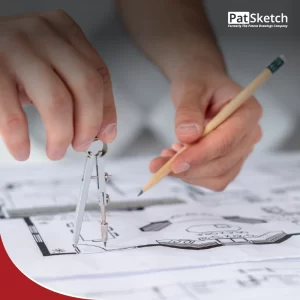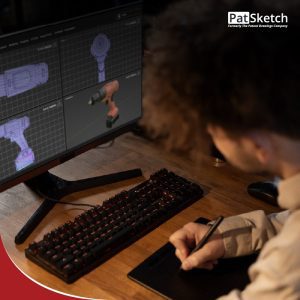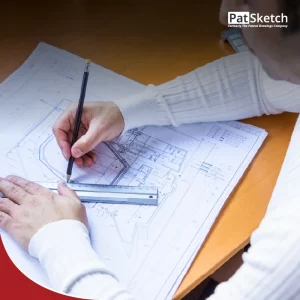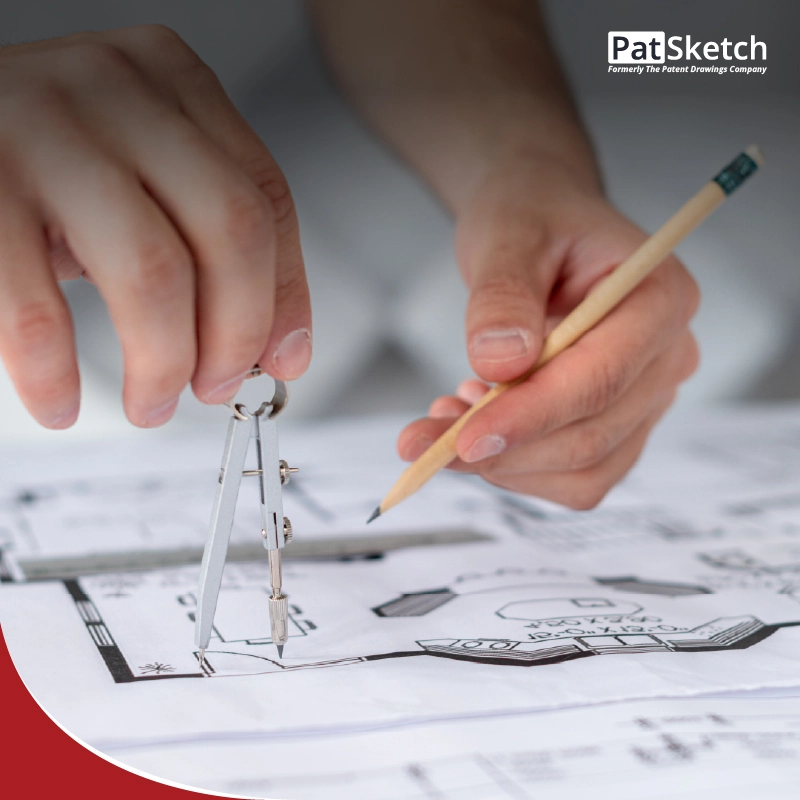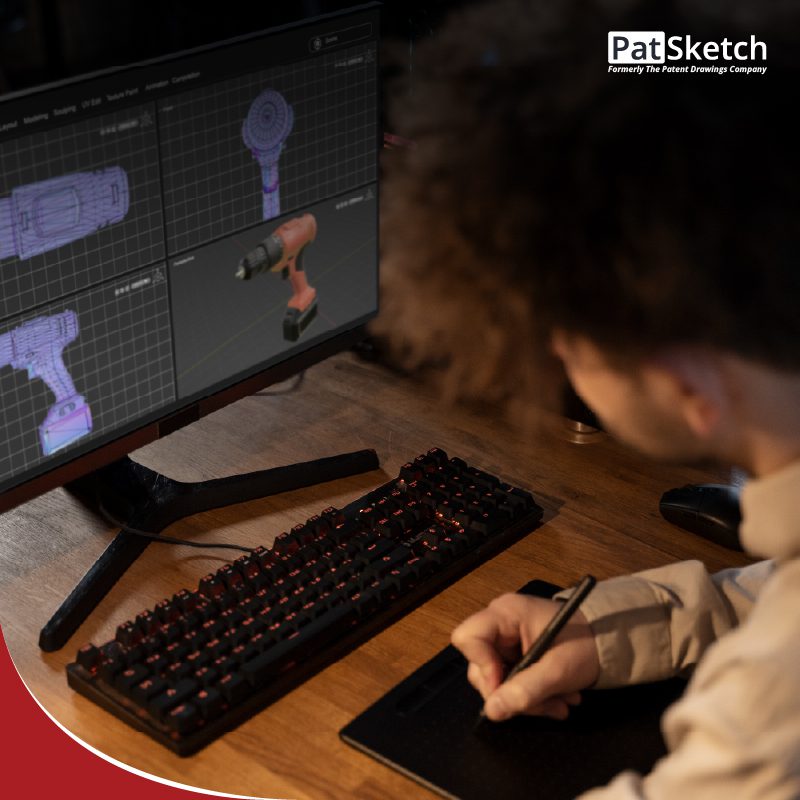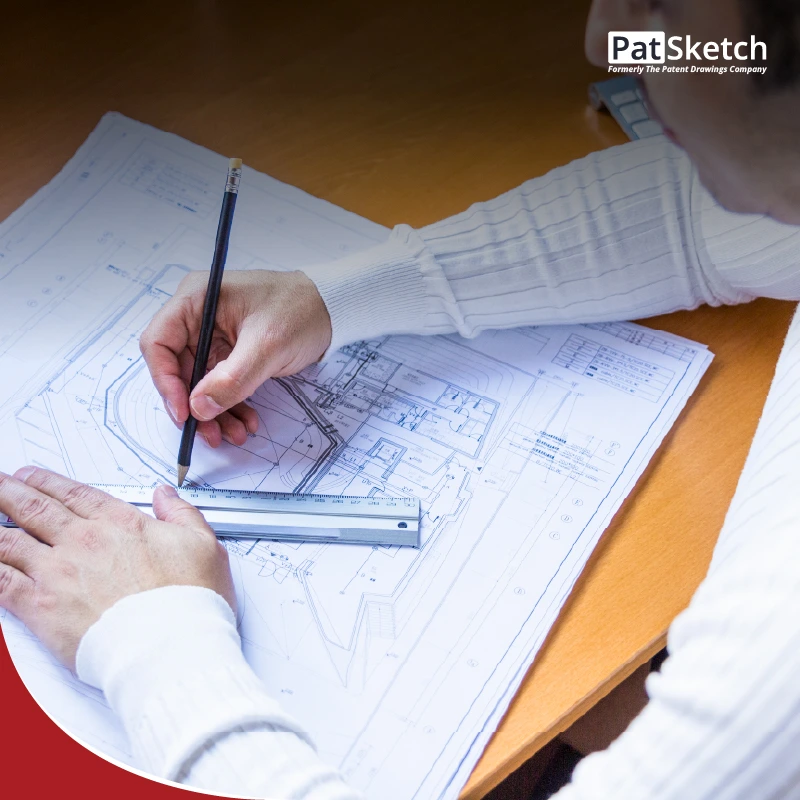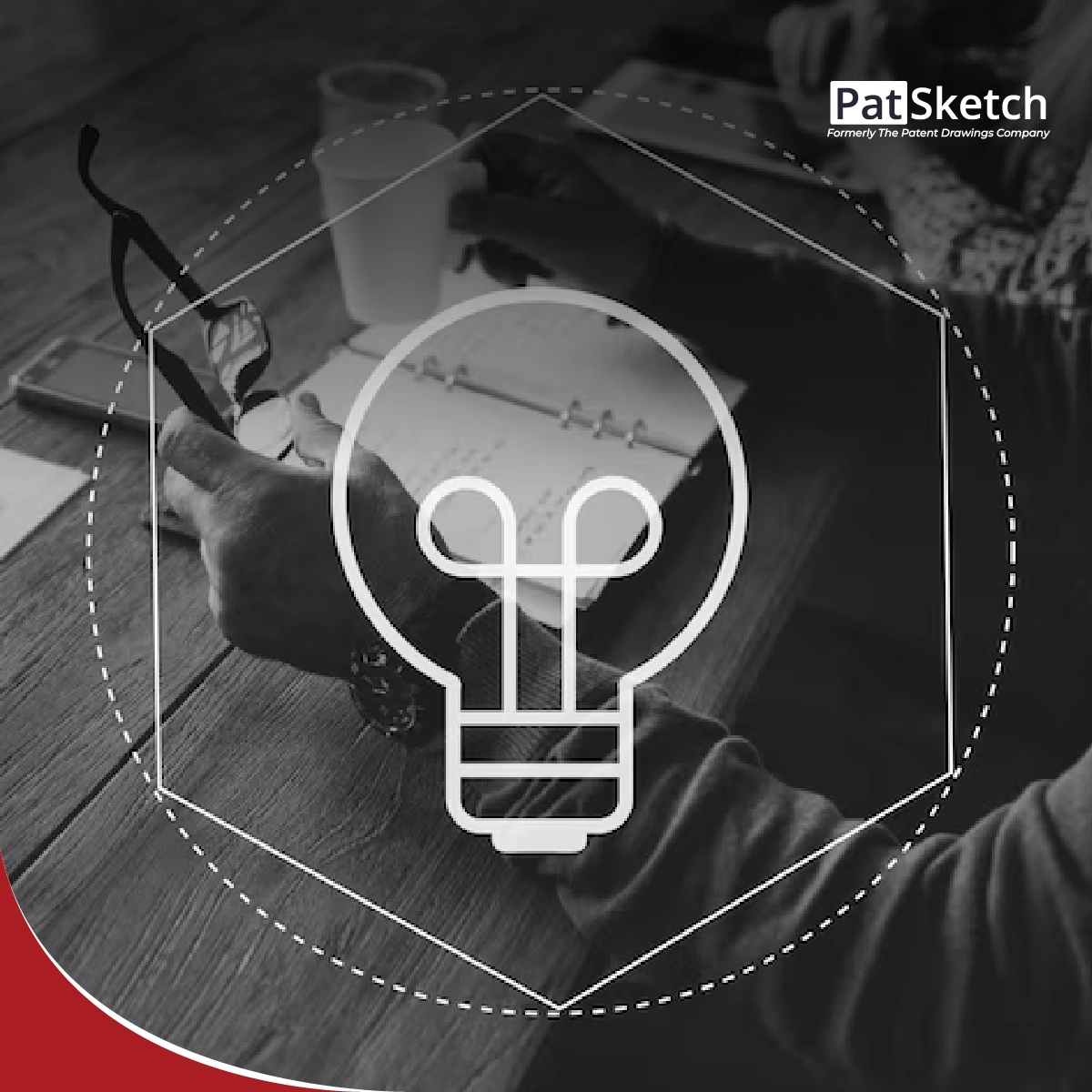1. Introduction
Patent drawings play a critical role in patent applications by providing visual representations of inventions. Well-optimized patent drawings can enhance the clarity, understanding, and enforceability of an invention’s disclosure. This article discusses strategies for optimizing patent drawings for different invention categories, along with examples that demonstrate effective visualization techniques.
2. Importance of Patent Drawings
Patent drawings serve several purposes in a patent application. They can:
- Enhance the understanding of the invention’s structure, operation, and features.
- Clarify complex concepts that may be difficult to describe solely through text.
- Illustrate embodiments, variations, and alternate configurations of the invention.
- Provide visual support for the written description and claims of the invention.
- Help patent examiners, inventors, and competitors comprehend the invention quickly and accurately.
Well-optimized patent drawings can significantly contribute to the overall quality and success of a patent application.
3. Strategies for Optimizing Patent Drawings
To optimize patent drawings effectively, consider the following strategies:
3.1 Understand the Invention and Its Components
Thoroughly understand the invention and its various components before creating patent drawings. This understanding enables you to focus on the key features and capture them accurately in the drawings.
3.2 Simplify and Focus on Key Features
Simplify the drawings by eliminating unnecessary details and emphasizing the essential elements of the invention. Highlight the unique aspects and features that distinguish the invention from existing technologies.
3.3 Use Clear Lines, Labels, and Annotations
Ensure that the lines, labels, and annotations in the drawings are clear, legible, and easy to understand. Use appropriate reference numerals or symbols to indicate specific parts or elements. Provide concise descriptions or explanations through captions or callouts.
3.4 Follow Patent Office Guidelines and Requirements
Adhere to the guidelines and requirements of the relevant patent office regarding drawing formats, sizes, margins, and other specifications. Compliance with these guidelines ensures that the drawings meet the official standards and are readily accepted.
3.5 Incorporate Different Views and Perspectives
Include different views and perspectives of the invention to provide a comprehensive understanding. For mechanical inventions, consider using exploded views, cross-sections, or multiple angles to illustrate the structure and assembly. For complex inventions, use flowcharts or diagrams to demonstrate the processes or interactions.
3.6 Use Digital Tools for Enhanced Visualization
Leverage digital tools and software to enhance the visualization of patent drawings. Computer-aided design (CAD) software allows for precise and detailed drawings. Three-dimensional (3D) modeling tools can provide interactive views, highlighting the invention’s functionality and operation.
4. Examples of Optimized Patent Drawings
4.1 Mechanical Inventions
For mechanical inventions, optimized patent drawings may include:
- Detailed views of the internal components, gears, or mechanisms.
- Exploded views to show the relationships between different parts.
- Sectional views to reveal the internal structure and features.
- Perspective views to demonstrate the invention’s overall appearance and functionality.
4.2 Electrical and Electronic Inventions
For electrical and electronic inventions, optimized patent drawings may include:
- Circuit diagrams showing the connections, components, and signals.
- Block diagrams illustrating the functional blocks and their interconnections.
- Schematic diagrams demonstrating the circuitry and operation.
- Flowcharts to represent the logical flow or operation of software or algorithms.
4.3 Chemical and Pharmaceutical Inventions
For chemical and pharmaceutical inventions, optimized patent drawings may include:
- Molecular structures or diagrams representing chemical compounds.
- Graphs, charts, or tables showing experimental data or results.
- Formulas, equations, or reactions illustrating the chemical processes.
- Flowcharts or diagrams depicting manufacturing processes or methods.
4.4 Biotechnological and Medical Inventions
For biotechnological and medical inventions, optimized patent drawings may include:
- Cell or tissue diagrams to visualize biological structures.
- Flowcharts representing diagnostic or treatment processes.
- Genetic or DNA sequence diagrams.
- Graphs or charts displaying experimental data or results.
5. Conclusion
Optimizing patent drawings is crucial for effectively communicating an invention’s structure, operation, and features. By understanding the invention, simplifying key features, using clear lines and labels, following patent office guidelines, incorporating different views, and leveraging digital tools, inventors can create patent drawings that enhance the clarity and understanding of their inventions.


